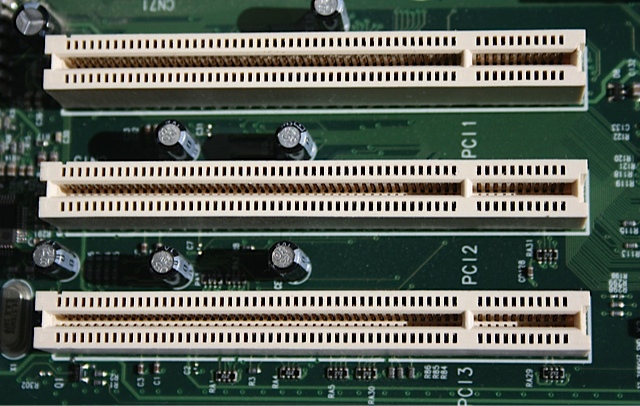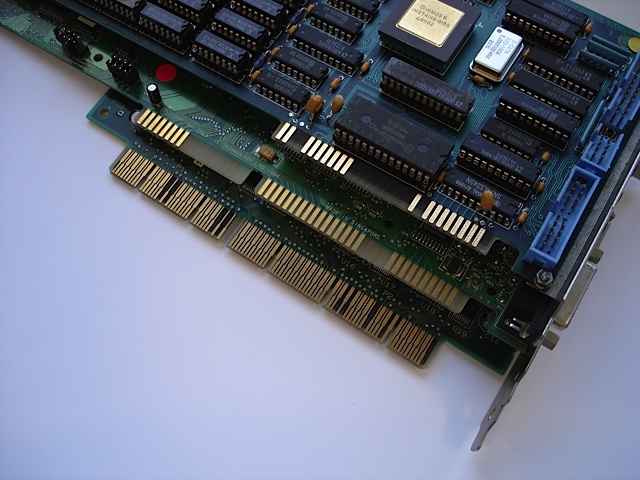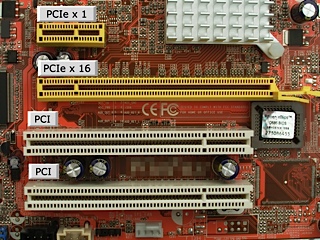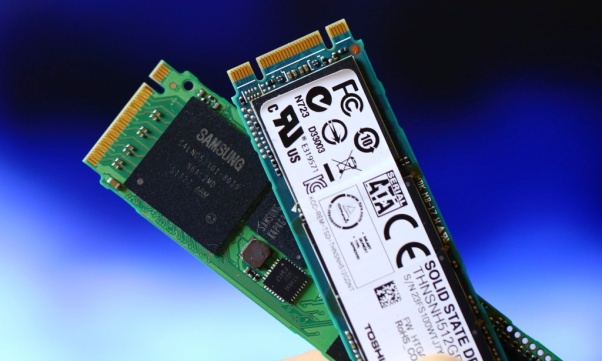The history of PCI - on the road to a brighter future drives

The modern revolution of data storage systems is impossible without the development of interfaces through which disks are connected to the system. One of the main "heroes" of this front is now the PCI Express bus. Nowadays high-speed drives work with a PCIe Gen2 x4 interface, providing speeds of up to 20 Gb / s, but this was not always the case.
1982 is the beginning of modern “tires” in personal computers. In the depths of IBM, a new computer was born, one of the distinguishing features of which was the openness of its architecture. The computer was named PC, and it communicated with the outside world using a completely new interface, which was called Industry Standard Architecture or ISA. This bus was able to work with 8-bit data at a frequency of 4.77 MHz, later appeared 16 and 32 bit options, working with an even higher frequency. A very simple scheme of this interface gave impetus to the development of the mass of external expansion cards, and it can be said that the open protocol of the external bus was one of the main reasons for the success of the new architecture at that time.
Not surprisingly, ISA has maintained its popularity for a very long time, and even now, motherboards supporting this bus are sold for quite a lot of money - too many irreplaceable devices are connected via it.
')
Based on ISA, a number of derived interfaces were developed, starting with PCMCIA and ending with ATA (in essence, a simplified subset of the ISA interface). Accelerated bus options were developed: EISA (32 bits, 8 MHz) and VESA Local Bus (used to connect the video adapter).
Over time, IBM lost the leading role in the development of the PC, so Intel engineers have already worked on the next generation of interfaces. At the very beginning of the 90s ... a new standard was developed, called Peripheral Component Interconnect or PCI. In 1992, the world saw the first PCI standard, at the same time the PCI Special Interest Group was created - an organization dedicated to the development and promotion of this standard. The standard was declared open, so anyone could develop a PCI device without paying deductions.

The first version of the bus supported 32 and 64 bits, worked at a frequency of 33 megahertz and in theory provided a speed of up to 133 Mb / s (in practice, about 80 Mb / s).
Having started its triumphant march from the server market, the new standard did not immediately conquer desktop PCs. One of the pioneers of its use was Apple, which abandoned the NuBus interface in its products for the years 95-96.
The maximum popularity of the new interface came in 1995 with the advent of version 2.1 (also called "parallel PCI bus"). This revision implied operation at 66 MHz and a maximum transfer rate of 533 MB / s (for the 64-bit version). PCI implementations have appeared for platforms with Alpha, MIPS, PowerPC, SPARC, etc. processors.
By the way, one of the main innovations of PCI was the ability to automatically configure device parameters, Intel called Plug-n-Play this technology, and thanks to the “stable” implementation of its software support in Microsoft products, this technology became the object of many jokes and anecdotes.
An attempt to extensive development of technology can be considered the bus PCI-X, mainly used in the servers. The first version of this standard worked with a frequency of 100 and 133 MHz, and also introduced a mechanism of separate transactions to optimize the operation of several cards. Now sometimes used bus PCI-X 2.0, which provides work at frequencies of 266 and 533 MHz.
In 2004, the world saw the new standard, which took into account all the problems of PCI. The new bus is called PCI Express or just PCIe (the main thing is not to confuse it with PCI-X). New technology offered a lot of interesting solutions.
- for transmitted data integrity control is performed
- QoS provides guaranteed bandwidth for connected devices
- there is power management of the connected devices and the possibility of hot-swapping them
The main difference is that PCIe does not use a “bus” topology, but a “star”, that is, each device is connected to a switch with a separate line.
The throughput of the first version of a single-connected PCIe was 4 Gb / s in both directions. The maximum speed in the standard PCIe 4 version (under development and scheduled for release in 2015) reaches 1024 Gbit / s. As you can see, in this parameter, PCIe has a good margin, although there is no need to relax, competitors are not asleep.

Recently Jeremy Werner (Jeremy Werner), one of the senior directors of the flash technology division (SandForce) at LSI, gave a very interesting interview concerning PCIe and SSD. You can read it in English in full, but I will briefly retell one thought that seemed to me especially interesting:
The maximum speed of a modern SATA interface is 6 Gbps, while SATA is half-duplex, that is, it does not know how to simultaneously transmit and receive data. The not so rare PCIe 2 generation with 4 data lines provides speeds up to 20 Gbit / s in full duplex mode. In fact, PCIe is about 7 times faster. But traditional hard drives simply do not need such data rates. Only SSDs can now provide speed sufficient for the full use of high-speed interfaces.

The combination of interfaces such as M.2 and high-speed flash drives seems to bring the future closer, in which the disk subsystem will cease to be the bottleneck in the PC. Apple computers are a prime example - a company as a player in the premium segment can afford to experiment with new solutions, and they are very successful in terms of performance. But because of cheapness, traditional hard drives and SATA-interface still do not think so easy to give up, so the total offensive bright future will have to wait a bit.
Source: https://habr.com/ru/post/216655/
All Articles